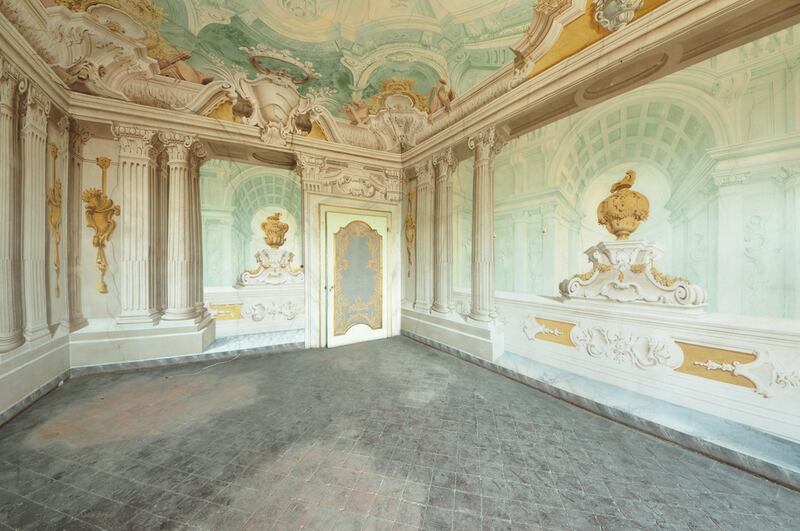W
hen a young Carlo Lorenzini first visited Villa Garzoni in Collodi in the 1830s, so taken was he by the “house with a hundred windows” that he adopted as his nom de plume the name of the 12th-century village where the house spreads across a sprawling seven acres.
In his later years, the writer Carlo Collodi would go on to pen one of the world’s most famous fairy tales,
The Adventures of Pinocchio
, citing as his inspiration the gardens of Garzoni where he spent many a happy childhood hour as his mother helped with the noble family living in the house and his father tended its lawns. The nobility and the gentry came and went, but Collodi’s wooden marionette became something of a legend, and the property is now almost always referred to as Pinocchio’s Villa.
The five-level Villa Garzoni was built in 1600, while the Luccan architect Diodati began work on the historic gardens in 1650 for the Garzonis, a Roman marquees family. The leafy lawns, with their graceful statues, ornate water features, stairs and mazes, were worked on for another 170 years after Diodati’s time, as more generations moulded them to suit their tastes. One particular batch of nobles, for example, inserted little pavilions, called bagnetti, at the top of the garden where their guests could entertain themselves in marble tubs filled with water as orchestral music played seemingly from within the vegetation. More recently, in 2007, the Butterfly House, which lies on the margins of the estate, was opened to the public. Each year the hundreds of tourists who visit Pinocchio Park, which opened in Collodi in 1956 in the Florentine author’s honour, combine their visit with a stop at Pinocchio’s Villa and its well-maintained Butterfly House.
In keeping with the elements of monumentality so essential to the lucchese style and the dramatic intensity typical of baroque architecture, the 300,000-square-foot garden plays out like an imposing theatrical stage, of which water is the puppetmaster. Continually flowing through the many falls and fountains dotting the area, it is the “theatre of the water that rules the scene in the garden”, says a spokesperson from Italy’s Lionard Luxury Real Estate. Imagine if you can this act: two majestic bleachers with banisters and recesses wind their way up a scala (balustrade staircase) to three terraced gardens, a waterfall gushing down their length towards two mirrored ponds. At the tip, between the green of the cypress trees and the blue of the Tuscan sky, stand the Statue of Farma and the Horn of Plenty fountain. On the first terrace, between two palm-lined avenues, is a sculptural version of Grotta di Nettuno (Neptune’s Grotto).
You continue up the scala and come upon two more avenues: one leads to the statue of Pomona, the divine protector of the garden, and the other to a charming open-air amphitheatre, the Teatrino di Verzura. Climb even higher alongside the bamboo thicket and find yourself in the serpentine Labirinto garden. At the end of the garden is a double-ramp staircase, decorated with terracotta statues and colourful mosaics in geometric designs. There is also a lawn called the Field of Miracles where a gardener famously found a hoard of coins in the 19th century – a story included in
The Adventures of Pinocchio
.
And, for the asking price of €19 million (Dh92m), this garden is only one part that Pinocchio Villa’s next buyer can be the proud owner of – for the estate is now on sale.
In the early 1600s, around the start of Italy’s baroque period of art and architecture, a young boy from Como by the name of Angelo Michele Colonna ran away from a house dominated by paternal opposition, and began working in Bologna as an apprentice to the quadrature master Girolamo Curti. On Curti’s well-heeded recommendation, Colonna painted frescoes for the Palazzo Albergati in Bologna, the church of Sant’Alessandro in Parma, Palazzo Spada in Rome and Pitti Palace in Florence. Now considered the world’s most productive figure in the field of 17th-century ceiling decoration, Colonna spent some time in Collodi before leaving Italy to go work for Philip IV of Spain. An equally impressive second part of the Villa Garzoni estate, then, is the house itself, all the main rooms of which boast frescoes by “Michelangelo” Colonna, who lived in and worked on the mansion in the late 1640s and early 1650s.
Constructed on the site of a medieval castle, the house spreads over 32,000 square feet – space aplenty for its 40 rooms. In addition to Colonna’s impressive and important art, the posterior gallery – currently open to the public – has paintings typical of the baroque style: benign and lonesome shepherd’s figure mingle with perspectives of medieval ruins and deceptively simple still-life imagery. A long winding staircase connects the main house to that monumental garden by its side.
A particular favourite of the local historian and Collodi expert Giuseppe Garbarino, who thinks “it would be nice if the new owner was a Pinocchio fan”, the house has been partially restored by the international logistics company that currently owns it. The villa is located in an elevated position compared to the landscape surrounding it, offering a panoramic view of the picturesque Tuscan village.
And, shrouded as it is in history and fable, complete with flamboyant rococo finishes, Pinocchio’s Villa continues to be a fitting place for lavish merrymaking and literary masterpieces.
[ pmunyal@thenational.ae ]
Follow us
[ @LifeNationalUAE ]
Follow us on
[ Facebook ]
for discussions, entertainment, reviews, wellness and news.





